

Home
About Us
Allotments
Garden Equipment
Seed Suppliers
Manure Problems
Children's Pages
GLA Blog
Weather Blog
School Veg Patch
Useful Links
Pruning cane fruit
Pruning cane fruit
We have various types of raspberries planted at the allotment.
We have two varieties of autumn fruiting raspberries - Joan J and Allgold (or Fallgold), two types of summer fruiting raspberry - Tulameen and Glen Ample, a purple raspberry - Glencoe and a black raspberry - Black Jewel. The purple and black raspberries produce clumps of canes rather like blackberries. The canes are very long and if they touch the soil will root and form a new clump.
In order to prune raspberries correctly you need to know whether they are autumn fruiting or summer fruiting.
Autumn fruiting varieties are catagorised as primocane types that produce fruit on canes produced in the year, i.e. canes produced in spring and summer will produce fruit in autumn of the same year. If left unpruned the same canes will fruit again the following summer
Summer fruiting varieties are known as floricane types and produce fruit on canes produced in the late summer/ early autumn of the previous year.
Pruning autumn fruiting raspberries
I usually leave pruning autumn raspberries until early spring, sometimes the plants start producing new growth before I cut out the old canes.
All the previous year's canes are cut to the ground and the bed given a general tidy up and some fertiliser.
Once the new canes are growing well I thin our each plant. All weak canes are cut out. I then leave three or four of the strongest canes to carry one growing and cut out the rest.
Usually the fruit starts to ripen around August. We have found that All Gold berries tend to spoil quickly especially if the weather is wet or very windy. Berries on Joan J are more resilient.
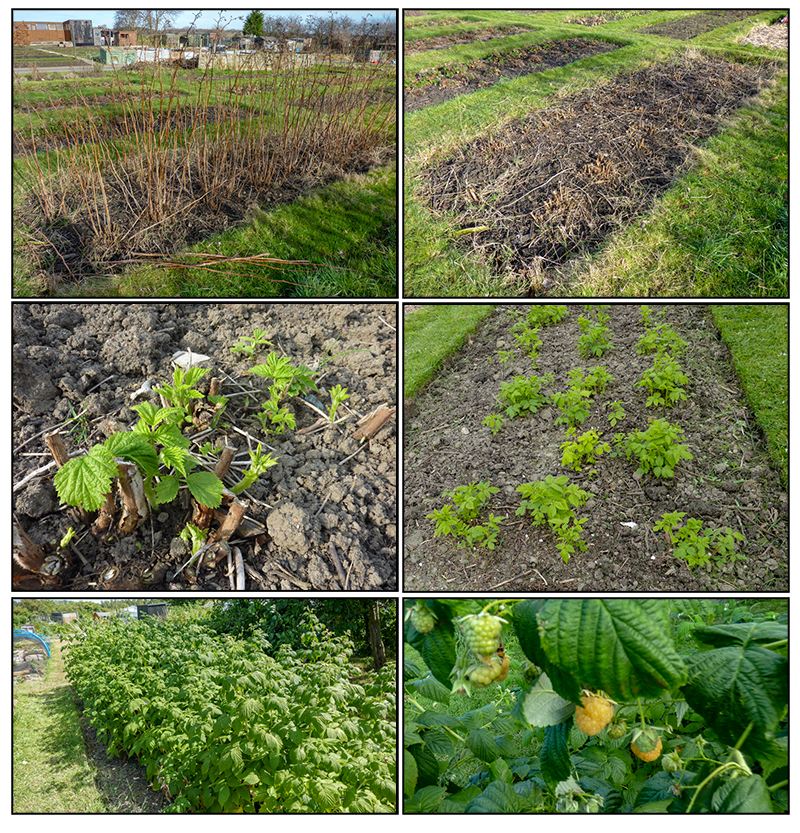
Pruning summer fruiting raspberries
One the canes on the summer fruiting raspberries have completed fruiting, they can be cut down to the ground. The new canes that will produce the next season's berries will have already grown and so care should be taken not to cut out the wrong canes. Soon after growth new canes will be green and the older canes will be brown but if pruning is delayed all the canes will be brown. If this is the case the old canes may support the remnants of berries and they will be twiggy whereas the new canes will be straight and unbranched. The older canes are also likely to be still tied into whatever support you are using.
Once the old canes have been removed the new canes can be tied in to the support. If the canes are very long the can be looped over at the ends as shown for the black raspberry.
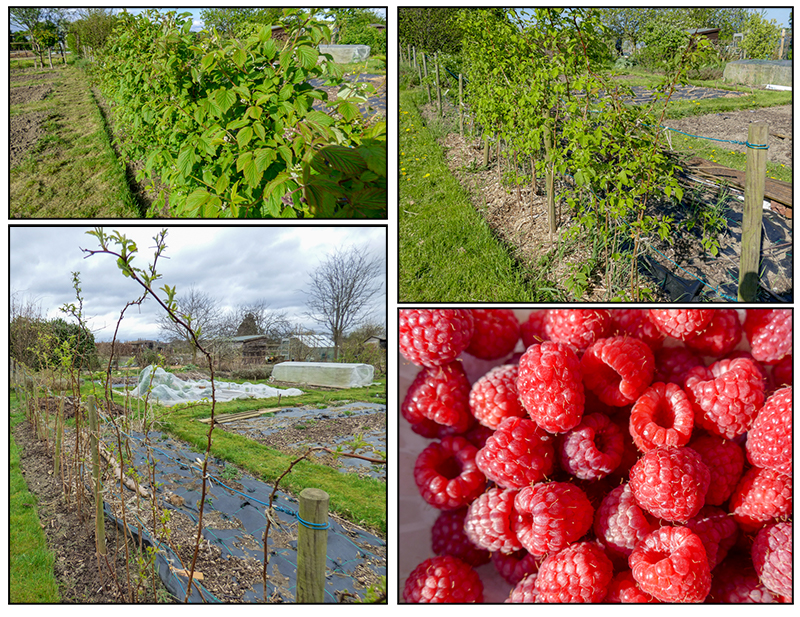
Pruning Glencoe raspberries
As mentioned previously Glencoe is a clump forming raspberry. We only bought one plant but, as can be seen in the bottom photo below, a tip of one cane bent over and rooted so we ended up with two clumps. The pruning is exactly as for the summer raspberry in that all the current season's fruiting canes are cut out and the canes that have newly grown are tied in. Again some thinning of the new canes may be required. Glencoe canes are very long and, as space is restricted, I bend them over in an arch before tying in.
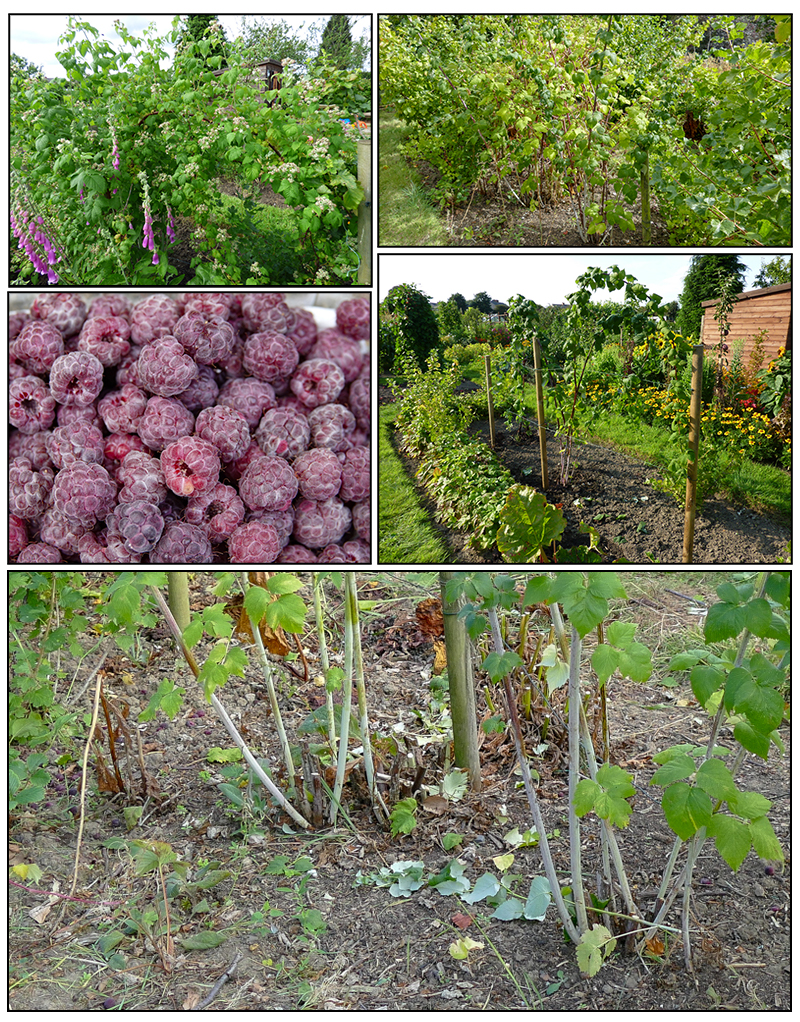
Pruning black raspberries
The black raspberry is also clump forming and is pruned in the same way as Glencoe'
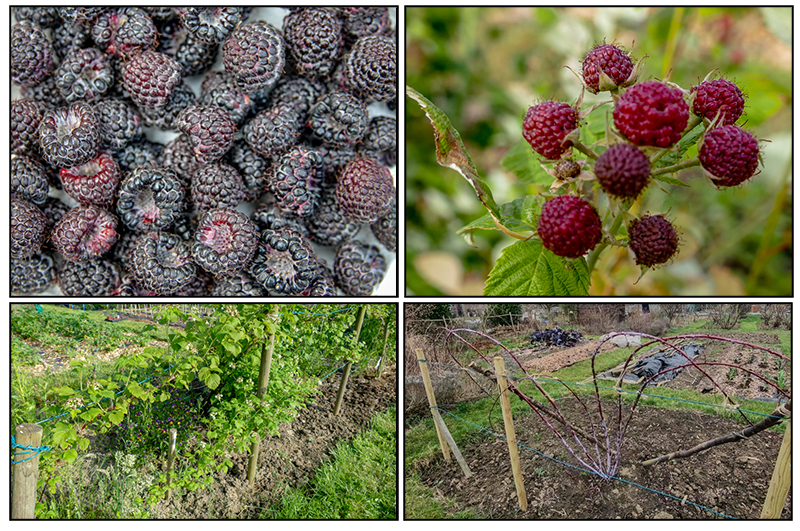
Pruning blackberries
Thankfully our blackberry - Loch Ness is thornless so no pain is inflicted when pruning which is basically the same as for the Glencoe raspberry. Some people leave their blackberry to go unpruned and to produce a thicker. We want a tamer specimen and leaving it to go wild is supposed to lead to smaller fruits. That would be a pity as Loch Ness produced large juicy fruits.
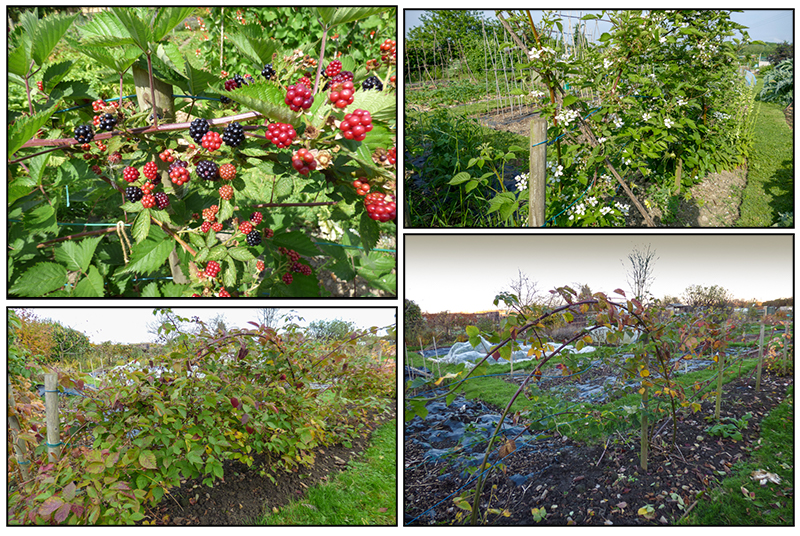
Pruning a tayberry or loganberry
As we inherited the plant we don't know whether it is a tayberry or loganberry, although I tend to veer towards a tayberry. It was already fairly wild when we took the plot and it had spread by tip rooting, in the same way as Glencoe. Since we have had the plot we have tamed it as much as the plant, which is extremely vigorous can be tamed. Unlike the thornless blackberry it also fights back. Despite the battle it is pruned after fruiting in the same way a The blackberry. The only difference is that as it produced masses of new canes before the plant has fruited, some are cut out as they grow. The canes that I want to retain are tied together. The bunches of canes are laid as low as possible and tied to the framework. If they grow unrestricted access to the fruit is difficult unless you happen to be a blackbird.
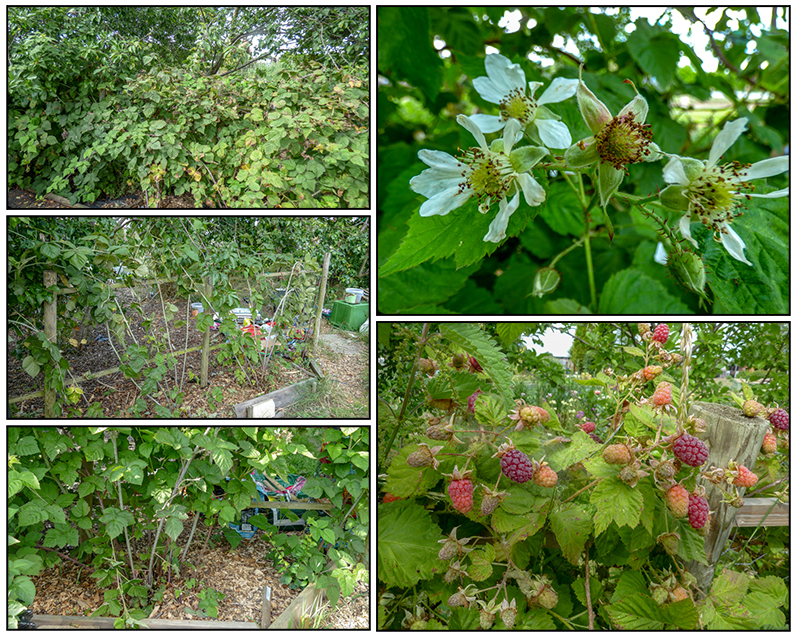
Our Plot at Green Lane Allotments Blog | A Gardener's Weather Diary | School Vegetable Patch Website
© Our Plot on Green Lane Allotments - Please email me if you wish to use any of this site's content